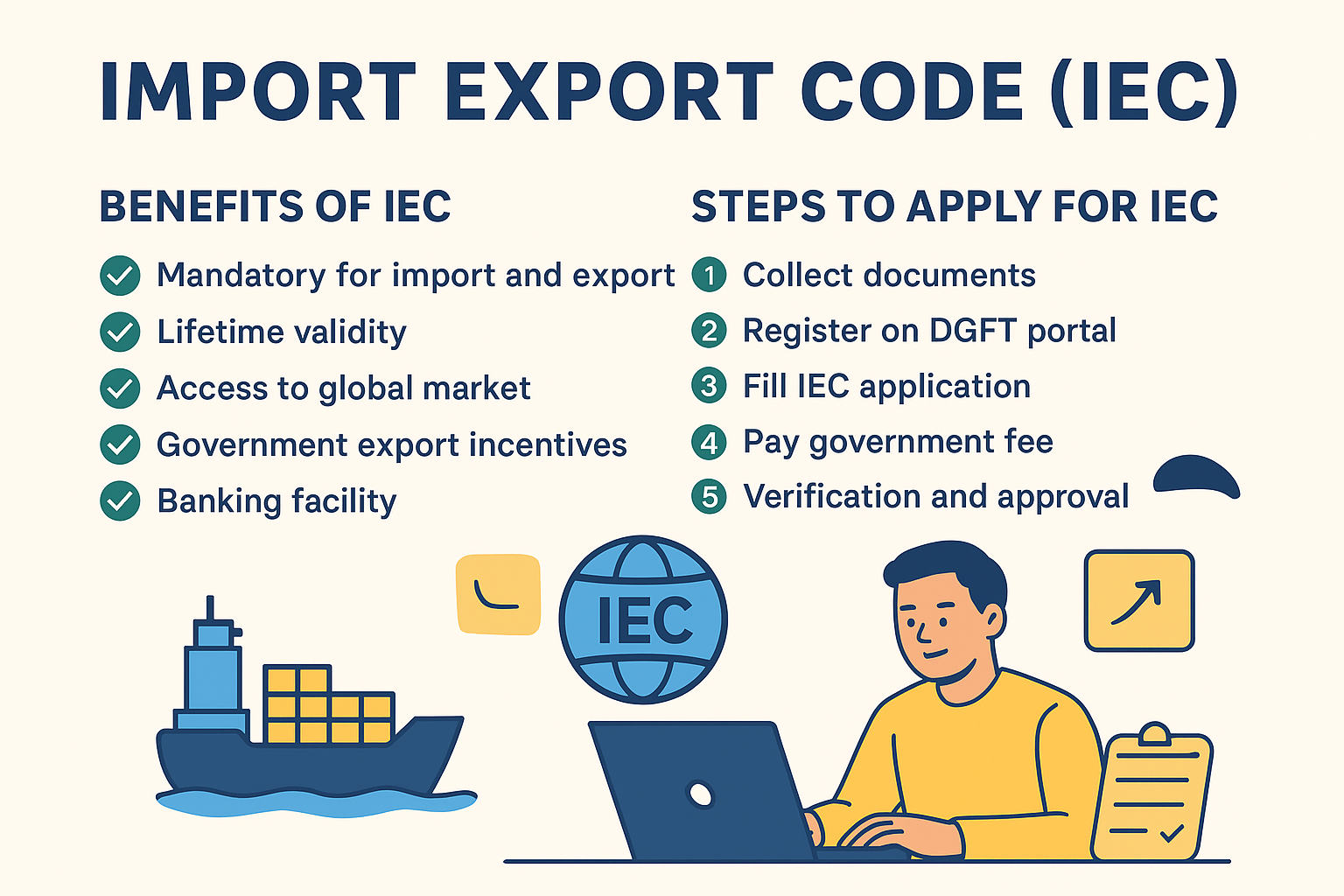If you want to sell your products abroad or import goods from another country into India, the first requirement is an Import Export Code (IEC). Many small businesses and entrepreneurs are not aware of this, but IEC is a very simple registration that opens the door to international trade.
This guide explains what IEC is, its benefits, who needs it, and how to apply step by step.
Table of Contents
What is Import Export Code (IEC)?
- IEC stands for Import Export Code.
- It is a 10-digit registration number issued by the Directorate General of Foreign Trade (DGFT).
- IEC acts like an identity number for any import or export business in India.
- Without an IEC, customs authorities and banks will not allow import/export transactions.
Benefits of IEC Code
- Mandatory for Import and Export – No shipment can be cleared without IEC.
- Lifetime Validity – Once allotted, IEC is valid for a lifetime, only online updates are required.
- Access to Global Market – Helps traders and businesses sell on international platforms like Amazon Global, Alibaba, etc.
- Government Export Incentives – Schemes like RoDTEP, Duty Drawback, and other export benefits can be availed only with IEC.
- Banking Facility – Banks require IEC for receiving foreign currency payments.
- Business Growth – Builds trust with overseas buyers and enables participation in global trade fairs and exhibitions.
Who Should Apply for IEC?
- Manufacturers exporting goods
- Traders and merchants importing/exporting goods
- Service providers earning foreign income (IT, consultancy, freelancers, tourism, etc.)
- E-commerce sellers selling abroad
- Any individual who wants to start import-export can apply; it is not limited to companies
Step-by-Step Process to Apply for IEC (2025)
The application process is completely online and simple.
Step 1: Collect Required Documents
- PAN Card (Individual or Business)
- Aadhaar Card of applicant
- Bank account details (Cancelled cheque or bank statement)
- Address proof of business/place of residence
- Passport size photograph
- If applying as a company/partnership: Incorporation certificate or partnership deed
Step 2: Register on DGFT Portal
- Visit DGFT Website
- Click “Apply for IEC”
- Create an account with PAN, mobile number, and email ID
Step 3: Fill IEC Application (Form ANF-2A)
- Enter business details and applicant details
- Provide bank details for export-import transactions
- Upload the required documents
Step 4: Pay Government Fee
- Pay the application fee of ₹500 online through Net Banking, Debit/Credit Card, or UPI
Step 5: Verification and Approval
- DGFT verifies the details online
- Within 1–2 working days, IEC certificate is issued
- Certificate is sent by email and can also be downloaded from the DGFT portal
When IEC is Not Required
- Import/export for personal use, not related to business
- Import/export by government departments
- When DGFT specifically grants exemption
Example for Better Understanding
Suppose Mr. Ravi, a handicraft trader in Delhi, receives an order from a buyer in the UK. To export goods legally and receive payment in foreign currency, he must have an IEC. After applying online with PAN, Aadhaar, and bank details, he receives his IEC within 2 days. Now Ravi can ship goods abroad and grow his business globally.
IEC vs GST – Are Both Needed?
- IEC is mandatory for import and export.
- GST is required if your turnover crosses the threshold or if you are supplying within India.
- For purely import-export businesses, IEC is sufficient (GST may not be mandatory in all cases).
Conclusion
IEC is the gateway to international trade. It is simple, affordable, and valid for a lifetime. Any individual, firm, or company can apply for IEC and start importing or exporting goods and services.
If you plan to:
- Start export business
- Import products for trading
- Sell services abroad
Then applying for IEC should be your first step. If you get professional services for applying, then contact taxgiveindia.com.
